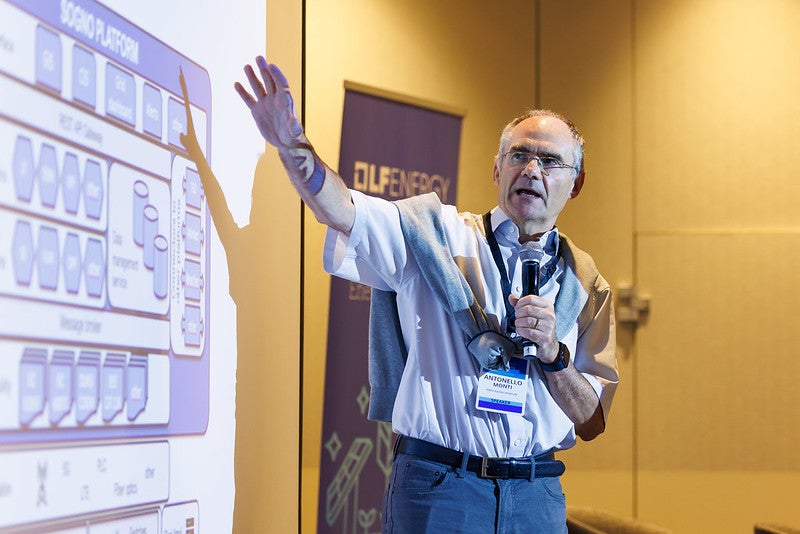LF Energy Summit Recap and Video: RomeFlex: SOGNO Platform in Action – A Step Towards Smarter Grids
LF Energy Summit 2024 saw an insightful presentation from Dr. Antonello Monti of RWTH Aachen University, shedding light on RomeFlex, a revolutionary project that brings the LF Energy SOGNO platform into real-world action. This project, driven by a commercial implementation in Rome, represents a significant shift in the energy landscape, marking the transition from research to practical application. Here’s a breakdown of the key takeaways from Dr. Monti’s talk (full video follows below).
1. The Evolution of the Distribution System Operator (DSO)
Dr. Monti began by emphasizing how the role of Distribution System Operators (DSOs) has fundamentally changed in recent years. Traditionally passive infrastructure has now become the core of energy generation due to the rise of distributed energy assets like solar panels and wind turbines. This shift from a top-down to a bottom-up energy model necessitates new technologies and platforms. The SOGNO platform – developed as part of an EU-funded research project – aims to address this by introducing an adaptable, modular microservices-based platform that integrates seamlessly with DSOs, enabling them to manage the increasing complexity of the grid.
2. SOGNO’s Microservices-Based Architecture
At the heart of SOGNO lies its microservices-based architecture. This structure allows DSOs to continuously adapt to the ever-evolving grid requirements without overhauling their systems. Unlike traditional monolithic platforms, which are inflexible and slow to adapt, SOGNO enables DSOs to plug in new services and solutions easily. For example, state estimation algorithms can be swapped out for AI-based alternatives, ensuring that the platform stays on the cutting edge of innovation.
3. Commercial Implementation in Rome: RomeFlex
The city of Rome became the first real-world example of SOGNO’s implementation through the RomeFlex project. Dr. Monti highlighted the complexities Rome faces, from navigating ancient ruins during construction to meeting the growing energy demands driven by increased use of air conditioning due to climate change. The SOGNO platform serves as the orchestration layer, managing the interfaces between flexibility services and the grid, ensuring that Rome can continue to operate efficiently while addressing these challenges.
4. Open, Scalable, and Standards-Based Innovation
Openness and interoperability are core to SOGNO’s design. Dr. Monti underscored how SOGNO leverages international data standards like the Common Information Model (CIM) to ensure compatibility with existing grid systems and future technologies. This open source, scalable platform not only fosters innovation but also invites contributions from startups and tech companies, accelerating the development of new grid services. A notable example includes startups integrating their AI-based solutions for power flow management within the SOGNO ecosystem, pushing the boundaries of grid automation.
5. The Future: Flexibility and the Broader European Grid
Beyond Rome, the success of SOGNO and RomeFlex has spurred further developments across Europe. Dr. Monti discussed additional implementations in Germany and Greece, where SOGNO is being used to support local energy communities and integrate with larger grid systems. The platform’s ability to create a flexibility market—allowing for both local and regional grid management—demonstrates its potential to transform not just single cities but entire energy networks.
